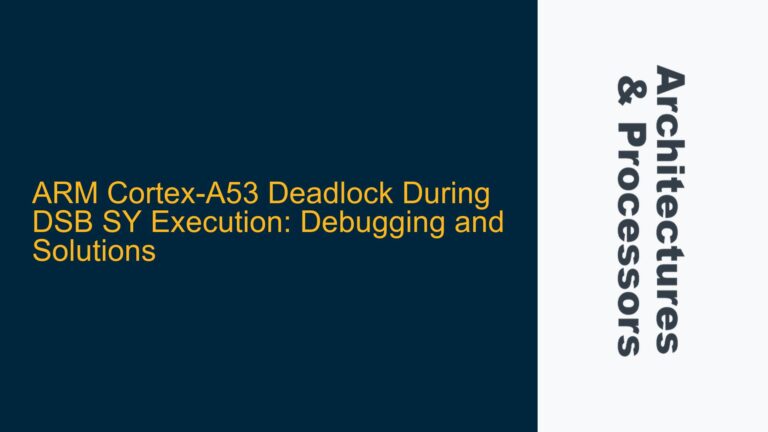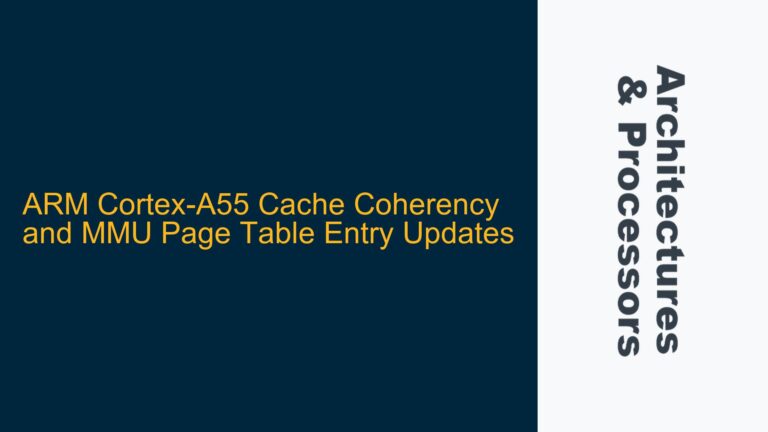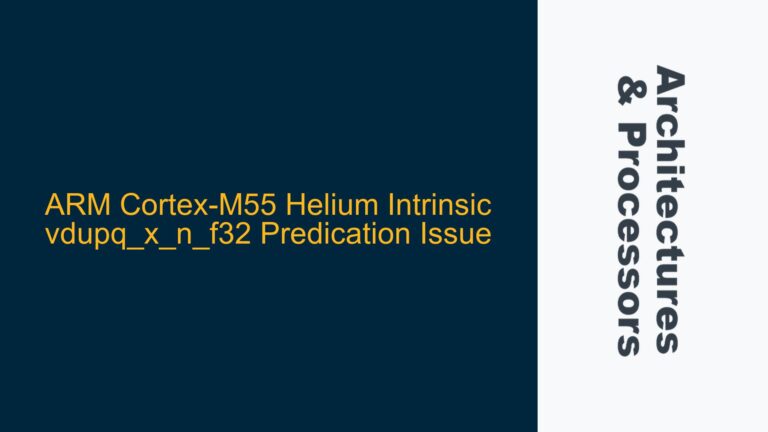ARM Cortex-A57 and Cortex-A53 Multi-Cluster Cache Coherency Challenges
In ARMv8-based systems with multi-cluster configurations, such as those combining Cortex-A57 and Cortex-A53 clusters, cache coherency and memory shareability attributes are critical for ensuring correct system behavior. The Cortex-A57 and Cortex-A53 clusters typically have their own private L1 and L2 caches, with no shared L3 cache. Instead, the main memory acts as the shared resource between the clusters. In such systems, the Linux kernel often configures memory as "inner shareable," which raises questions about the rationale behind this choice and its implications for cache coherency and system performance.
The inner shareable attribute is part of ARM’s memory model, which defines how memory transactions are propagated across different shareability domains. These domains include inner shareable, outer shareable, and non-shareable regions. Inner shareable memory is visible to all processing elements (PEs) within the same inner shareable domain, while outer shareable memory extends this visibility to PEs in different inner shareable domains. Understanding why Linux sets memory as inner shareable in multi-cluster ARMv8 systems requires a deep dive into the ARM architecture, cache coherency mechanisms, and the role of the Cache Coherent Interconnect (CCI).
Memory Shareability Domains and Cache Coherency in ARMv8
The ARMv8 architecture defines shareability domains to manage cache coherency and memory visibility across multiple processing elements. These domains are hierarchical and include:
-
Inner Shareable Domain: This domain includes all PEs that share the same inner cache hierarchy. For example, in a multi-cluster system, each cluster (e.g., Cortex-A57 or Cortex-A53) typically forms its own inner shareable domain. Memory marked as inner shareable is coherent across all PEs within the same inner shareable domain.
-
Outer Shareable Domain: This domain extends coherency across multiple inner shareable domains. Memory marked as outer shareable is coherent across all PEs in different inner shareable domains, provided the hardware supports this level of coherency.
-
Non-Shareable Domain: Memory in this domain is private to a single PE and is not coherent with any other PE.
In a multi-cluster system, the Cache Coherent Interconnect (CCI) plays a crucial role in maintaining coherency between clusters. The CCI ensures that memory transactions from one cluster are propagated to the other cluster, enabling data coherency across the entire system. However, the shareability attributes of memory regions must be configured correctly to leverage the CCI’s capabilities.
The Linux kernel sets memory as inner shareable in multi-cluster ARMv8 systems because it assumes that all clusters are part of the same inner shareable domain. This assumption is based on the fact that a single operating system manages all clusters, and the hardware design ensures that the CCI maintains coherency between them. By marking memory as inner shareable, the kernel simplifies cache management and avoids the overhead of handling outer shareable memory, which would require additional coherency maintenance operations.
Implementing Cache Coherency Across Multi-Cluster ARMv8 Systems
To ensure cache coherency in multi-cluster ARMv8 systems, developers must understand the hardware design and configure the memory shareability attributes accordingly. The following steps outline the process of implementing and troubleshooting cache coherency in such systems:
-
Verify Hardware Design and CCI Configuration: The first step is to confirm that the hardware design supports cache coherency between clusters. This includes verifying that the CCI is properly configured to propagate coherency signals between the Cortex-A57 and Cortex-A53 clusters. If the CCI is not configured correctly, cache coherency cannot be guaranteed, regardless of the memory shareability attributes.
-
Configure Memory Shareability Attributes: The Linux kernel sets memory as inner shareable by default in multi-cluster systems. This configuration is appropriate if all clusters are part of the same inner shareable domain. However, if the hardware design includes multiple inner shareable domains (e.g., one for each cluster), the memory shareability attributes must be adjusted to ensure coherency across domains. This may involve marking certain memory regions as outer shareable.
-
Use Cache Maintenance Operations (CMOs): In cases where hardware coherency is not fully supported, software-based cache maintenance operations (CMOs) can be used to enforce coherency. These operations include cache invalidation, cleaning, and flushing, which ensure that data in one cluster’s cache is visible to other clusters. However, CMOs introduce additional overhead and should be used judiciously to avoid performance degradation.
-
Monitor System Performance: After configuring the memory shareability attributes and implementing CMOs, it is essential to monitor system performance to ensure that cache coherency is maintained without introducing excessive overhead. Performance monitoring tools can help identify bottlenecks and optimize cache management strategies.
-
Consult Hardware Documentation: The shareability domains and cache coherency mechanisms are specific to the hardware design. Therefore, developers should consult the hardware documentation and work closely with the hardware team to understand the system’s capabilities and limitations. This collaboration is crucial for correctly configuring the memory shareability attributes and ensuring cache coherency.
By following these steps, developers can ensure that cache coherency is maintained in multi-cluster ARMv8 systems, enabling efficient and reliable operation of the Linux kernel and other software components. The key is to align the software configuration with the hardware design, leveraging the capabilities of the CCI and other coherency mechanisms to achieve optimal performance.
In conclusion, the Linux kernel’s decision to set memory as inner shareable in multi-cluster ARMv8 systems is based on the assumption that all clusters are part of the same inner shareable domain. This configuration simplifies cache management and leverages the hardware’s coherency mechanisms to ensure correct system behavior. However, developers must carefully consider the hardware design and configure the memory shareability attributes accordingly to avoid coherency issues and performance bottlenecks. By understanding the ARMv8 memory model and implementing the appropriate cache management strategies, developers can ensure that multi-cluster systems operate efficiently and reliably.






